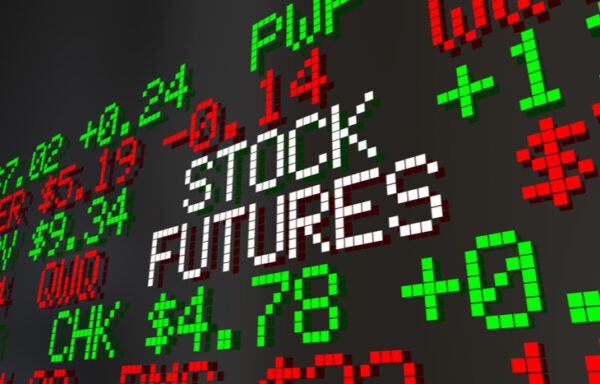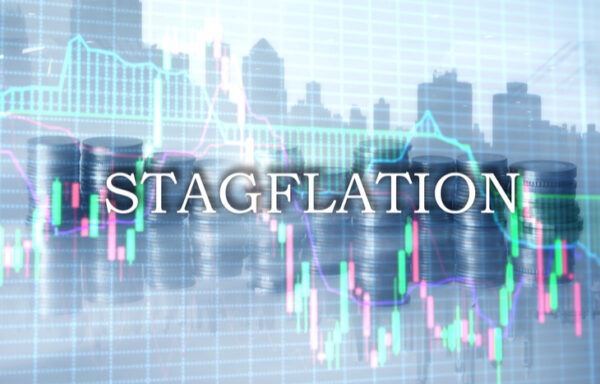2020 Vision: What Could Go Wrong?
- The 2020 election could have major implications for our economy and the stock market.
- Today, Mark Skousen shares his vision for 2020, along with what you can do to protect yourself and grow your wealth.
“Hindsight may be 20-20, but foresight is still 50-50.”
– Norman Sharief, as quoted in The Maxims of Wall Street
As we enter a new decade, you’re probably wondering whether we’re headed for another Roaring ’20s or Great Depression. The direction of the economy will impact your portfolio in a big way.
My Run-Ins With Doomsayers
This reminds me of a debate I had with a doom-and-gloomer back in the summer of 1989 on the subject “The 1990s: Will We Face Prosperity or Depression?” I took the side of prosperity while the permabear argued that we were headed for a collapse not unlike the 1987 crash.
I lost the debate 2-1 because my opponent showed a graph that convinced the audience that trouble was brewing: a hyperbolic rise in the number of HIV/AIDS cases that he said would bankrupt the entire insurance industry, causing the U.S. economy to collapse.
It turned out that Big Pharma developed effective treatments for HIV/AIDS patients and the crisis abated. The U.S. enjoyed a booming economy and the best decade in the history of Wall Street. My optimism was vindicated.
During that debate, I made two predictions that appeared outlandish to the audience: The Berlin Wall would be torn down, and the federal government would achieve a balanced budget in the 1990s. Both predictions were greeted with derisive laughter.
But the Berlin Wall did fall in November 1989, and the federal budget briefly went into surplus in the late 1990s under President Clinton and a Republican Congress.
What’s Next for 2020 and Beyond?
Fast-forward 30 years: Am I still optimistic now that the stock market is enjoying another banner year? I admit that I am an optimist by nature and friends have accused me of being a permabull.
I’ve had my share of bearish calls but, overall, I’ve been 100% invested in the stock market throughout most of the 1990s and the new century. My positive approach to investing has paid off in the 40 years I’ve been writing Forecasts & Strategies.
But here’s a surprise… For the first time in years, I’m getting worried about some potential black swan events that could soon derail this bull market.
I’m speaking on the topic “When Will the Mother of All Bull Markets End?” at MoneyShow conferences and The Oxford Club’s Investment U Conference this year.
There’s an old saying on Wall Street, “Bull markets never die of old age; they are killed.” Killed by whom? By bad government policy!
Here’s a preview…
President Donald Trump and the Republicans could lose in November, setting the stage for socialist Democrats to take over and reverse the benefits of the corporate tax deregulation.
Most Wall Street analysts are convinced that if the economy and the stock market are doing well, the incumbent will win in November. Generally, they are right. But this year it could be different for two reasons.
Reason No. 1: The Democratic Agenda
More young people and women are voting than ever before, and they tend to vote Democratic. Trump barely won in 2016, and in fact he lost the popular vote by 2.9 million. The Democrats are determined to end Trump’s agenda via impeachment or the general election, and they are doing well in the polls.
American University Professor Allan Lichtman, author of The Keys to the White House: A Surefire Guide to Predicting the Next President, has correctly forecast the outcome of every presidential election from Ronald Reagan to Trump. He told me that Trump is likely to win reelection unless he is impeached. So all bets are off.
If the Democrats win, expect a dramatic reversal in policy. That means tax increases, new attacks on business and new government programs, including free college tuition and Medicare for All.
Reason No. 2: Another Financial Crisis
The second reason Trump could face a backlash is an unexpected financial crisis.
Back in late July, Trump approved what has been called “the worst budget deal in history.” He avoided another federal shutdown by agreeing with House Democrats and Republicans to a budget-busting $5 trillion spending plan for the 2020 and 2021 fiscal years, with annual deficits exceeding $1 trillion.
(Never mind his campaign promise to reduce government spending and the national debt. Full spending ahead!)
As a result of the deal, the Treasury was forced to borrow massive amounts of money, raising the national debt to nearly $23 trillion in short order. Then, suddenly, something unexpected happened. Short-term interest rates on money market funds (“repos”) jumped to nearly 10% in mid-September.
The repo market is important. The financial panic of 2007 to 2009 stemmed from a run on the repurchase market. Repurchase agreements are short-term bank loans to institutions; the loans are backed by government debt, mortgages and other securities.
This unexpected credit crunch took the Federal Reserve by surprise, and it was forced to intervene and make emergency overnight cash loans. The Fed also bought $75 billion in Treasury securities and cut the fed funds rate.
Fortunately, the repo market calmed down, but the danger is far from over. Since the crisis, the Fed has sharply increased the amount of money it lends directly to the U.S. government and pushed interest rates down to normal levels to avoid a panic.
It could happen again in 2020, given the excessive spending by the federal government. That could be inflationary. According to the presidential cycle, stocks tend to be volatile during an election year. I expect that to be the case in 2020.
Another Major Terrorist Attack?
It’s also possible that a black swan event might occur in 2020 that could disrupt the stock market and U.S. elections. There could be destabilizing events in the Middle East, Asia and other hot spots around the world.
In the past, terrorists have selected unique dates to make a statement, such as 9/11 in 2001 or April 19 (Patriots’ Day). The year 2020 is special and may be an opportunity to engage in another attack.
What should you do to protect your profits?
Wise men have said, “It is better to prepare than to predict.” What can you do to anticipate – and prepare for – possible trouble in 2020?
First, for money you can’t afford to lose, consider buying stock index annuities to protect your gains. There are a few really good ones out there that allow you to profit when the stock market goes up but guarantee no loss during down years.
Second, gold and silver should continue to do well in 2020. Allocate 5% to 10% (but no more) of your portfolio to either gold or silver ETFs such as the SPDR Gold Shares ETF (NYSE: GLD) or iShares Silver Trust ETF (NYSE: SLV), mining stock ETFs such as VanEck Vectors Gold Miners ETF (NYSE: GDX), or gold and silver coins from reputable coin dealers like Asset Strategies International.
Third, stay invested in quality “growth and income” stocks that have a rising dividend policy and will continue to pay generous dividends during any downturns. Two newsletters specialize in this area: Marc Lichtenfeld’s Oxford Income Letter and my own Forecasts & Strategies.
[adzerk-get-ad zone="245143" size="4"]




